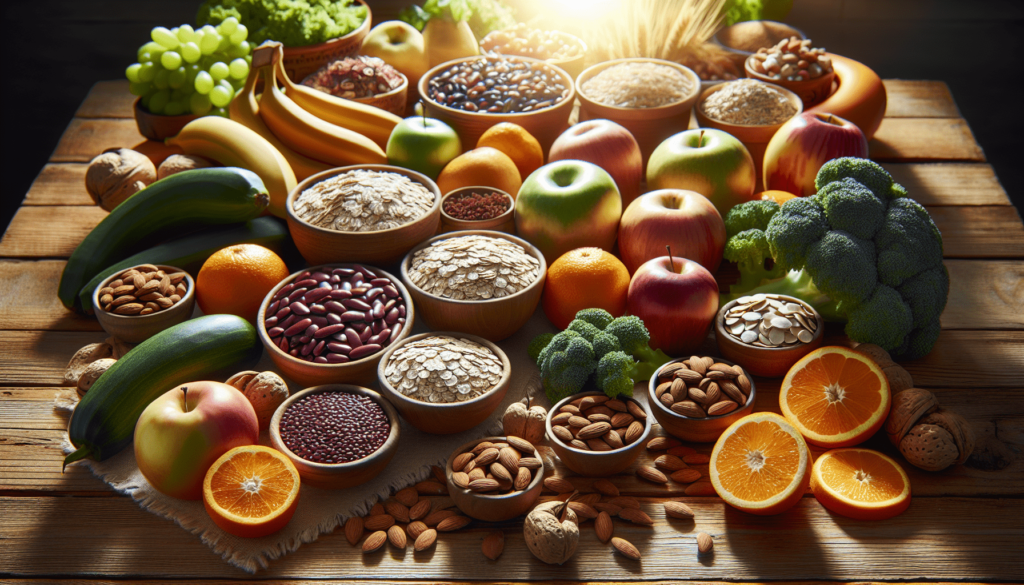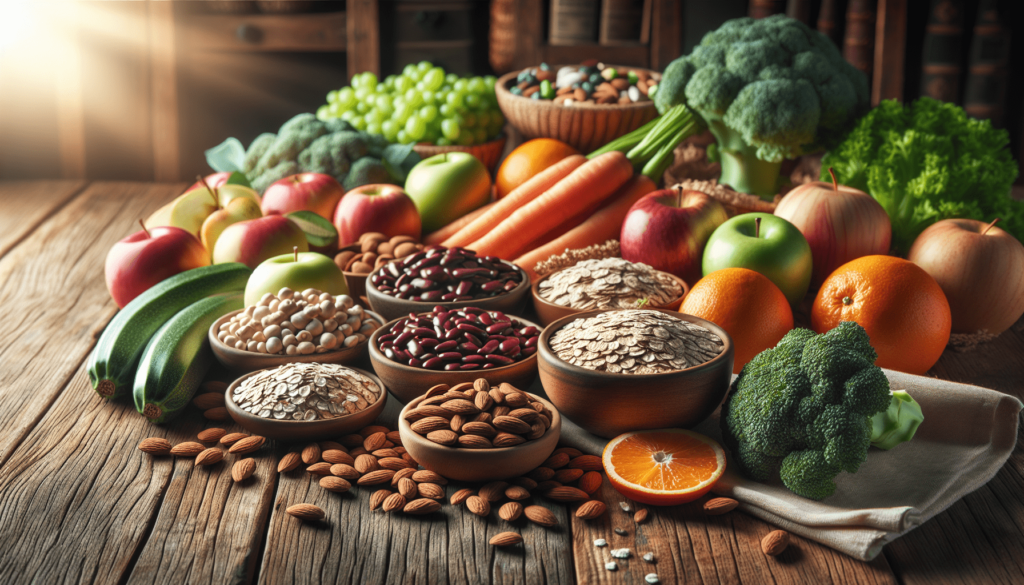Diving into the world of nutrition, you might often hear about the importance of including fiber in your diet. It’s not just another dietary fad; fiber plays a crucial role in keeping your digestive system humming along smoothly. If you’re curious about how to incorporate more of this essential nutrient into your meals, exploring various good sources of fiber is a great start. From crunchy vegetables to hearty whole grains, there are plenty of tasty options that can help you boost your fiber intake effortlessly. So, let’s explore some of the best ways you can add fiber-rich foods to your daily routine and enjoy the health benefits that come with them. Have you ever wondered why fiber is such a crucial part of your diet and where you can get it? Well, you’re not alone. Many understand it’s important but might not know where to start when it comes to incorporating more fiber into their meals. This article will navigate the fibrous world, exploring why it’s important for your health and highlighting some top-notch sources that you can include in your diet.

Why Fiber is Important for Your Health
Fiber plays a key role in your overall health, offering a range of benefits that help your body function at its best. Let’s dive into why fiber is more than just a dietary requirement—it’s a component vital to your well-being.
Supports Digestive Health
Fiber aids in maintaining a healthy digestive system by helping to keep your bowel movements regular. This is because fiber adds bulk to your stool, making it easier to pass and reducing your chance of constipation. If you’ve ever felt “out of whack” after a few days of low-fiber meals, it’s likely because your body is missing out on this essential substance.
Aids in Weight Management
Feeling full after a meal isn’t just about satisfaction; it’s about giving your body the nutrients and time it needs to signal fullness to your brain. High-fiber foods take longer to eat and digest, leading to an increased feeling of fullness and a reduced appetite. Incorporating more fiber into your meals can help you control your weight by decreasing unnecessary snacking or overeating.
Helps Control Blood Sugar Levels
For those managing diabetes or insulin sensitivity, fiber can be a true ally. Soluble fiber, in particular, can help slow the absorption of sugar and improve blood sugar levels, providing a steadier source of energy rather than causing peaks and troughs.
Lowers Cholesterol Levels
Adding more soluble fiber to your diet can also help lower bad cholesterol levels (LDL), hence reducing the risk of heart disease. It works by binding with cholesterol particles in your digestive system and removing them from the body before they’re absorbed.
Reduces the Risk of Certain Diseases
Regular intake of fiber helps reduce the risk of developing various chronic diseases, including heart disease, diabetes, and colorectal cancer. Dietary fiber, especially from whole grains and cereals, is linked to a lower risk of disease mortality.
Now that you understand the incredible benefits of fiber, let’s look into where you can find this fantastic nutrient.
Rich Sources of Fiber
Getting enough fiber into your diet is easier than it might seem. Here’s a breakdown of some excellent sources of dietary fiber that you can incorporate into your daily eating plan.
Fruits and Vegetables
Fruits
Fruits are not only sweet and tasty but also a great source of vitamins, minerals, and fiber, especially in the skin. Apples, bananas, oranges, and berries all have a significant amount of fiber. Here’s a quick look:
| Fruit | Fiber (grams per serving) |
|---|---|
| Apple (with skin) | 4 g |
| Banana | 3 g |
| Orange | 3.1 g |
| Raspberries | 8 g per cup |
Vegetables
Vegetables are another essential source of fiber. Dark-colored vegetables typically have more fiber than their lighter counterparts.
| Vegetable | Fiber (grams per serving) |
|---|---|
| Broccoli | 2.4 g per cup (chopped) |
| Carrots | 3.6 g per medium carrot |
| Brussels Sprouts | 4 g per cup |
Whole Grains
Switching to whole grains from refined grain products is one of the simplest ways to increase your fiber intake. Whole grains contain all parts of the grain, providing more fiber than refined grains, which have been processed to remove the bran and germ:
| Whole Grain | Fiber (grams per serving) |
|---|---|
| Quinoa | 5 g per cup (cooked) |
| Brown Rice | 3.5 g per cup (cooked) |
| Oatmeal | 4 g per cup (cooked) |
Legumes, Nuts, and Seeds
Legumes
Beans and lentils are not only high in protein but also rich in fiber. They can be a main dish, a tasty side, or a hearty addition to soups and salads.
| Legume | Fiber (grams per serving) |
|---|---|
| Lentils | 15.6 g per cup (cooked) |
| Black Beans | 15 g per cup (cooked) |
| Chickpeas | 12.5 g per cup (cooked) |
Nuts and Seeds
Nuts and seeds are a healthy snack that packs a fiber punch.
| Nuts/Seeds | Fiber (grams per serving) |
|---|---|
| Almonds | 3.5 g per ounce |
| Chia Seeds | 10 g per ounce |
| Flaxseeds | 2.8 g per tablespoon |
Supplements and Fortified Foods
While whole foods are the best sources of fiber, there are times you might need a boost. Fiber supplements like psyllium husk or fortified foods can be beneficial. However, it’s crucial to check with a healthcare provider before starting any supplement regimen.
Delicious High-Fiber Recipes
Breakfast Idea: Overnight Berries and Chia Oats
Soak 1/3 cup of oats and a tablespoon of chia seeds in almond milk overnight. In the morning, top with a cup of fresh berries for a delicious and fiber-rich breakfast.
Lunch Idea: Quinoa Salad with Mixed Veggies
Cook quinoa and allow it to cool. Mix with cucumbers, tomatoes, broccoli, and carrots. Dress with olive oil and lemon juice for a refreshing, fibrous meal.
Dinner Idea: Lentil Soup
Simmer lentils with chopped tomatoes, onions, carrots, celery, and your favorite seasonings to taste. Enjoy a bowl of fiber-rich, comforting lentil soup.

Final Thoughts
Increasing the fiber in your diet benefits your health in so many ways, from improving digestion to helping prevent chronic diseases. With a wide variety of sources available, from delicious fruits and vegetables to hearty grains and legumes, incorporating more fiber into your meals can be both satisfying and beneficial. Start experimenting with these foods and recipes, and you’ll be well on your way to a fiber-rich diet!
Remember, introducing fiber to your diet should be a gradual process. Too much fiber too quickly can lead to discomfort. Instead, increase your intake slowly and be sure to drink plenty of water to help fiber do its best work. Enjoy your journey to a healthier, fiber-rich lifestyle!
